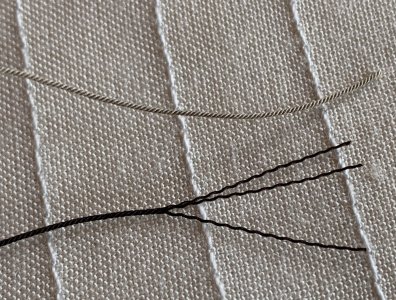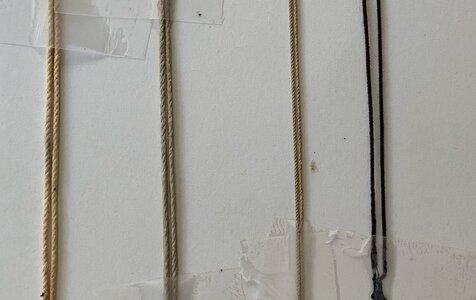By rigging I am also using 0.5 mm (thickness) cotton (CO)yarn . Shortly I ordered from Modelbau Takelgarn 0.5 mm PES based yarn .While working with it I noticed whenever you cut it,it splits extremly. Before you work it out,you have always to glue or heat the ends and much yarn and glue is wasted in that way.
I think the base material is to stiff compared to CO based yarn or it is not fixed well after spinning.
See attachment(dark colored is PES and the light one is CO just after being cutted, both without any treatment) Both yarns have actually wonderfull structure despite their small thicknesses

I think the base material is to stiff compared to CO based yarn or it is not fixed well after spinning.
See attachment(dark colored is PES and the light one is CO just after being cutted, both without any treatment) Both yarns have actually wonderfull structure despite their small thicknesses




